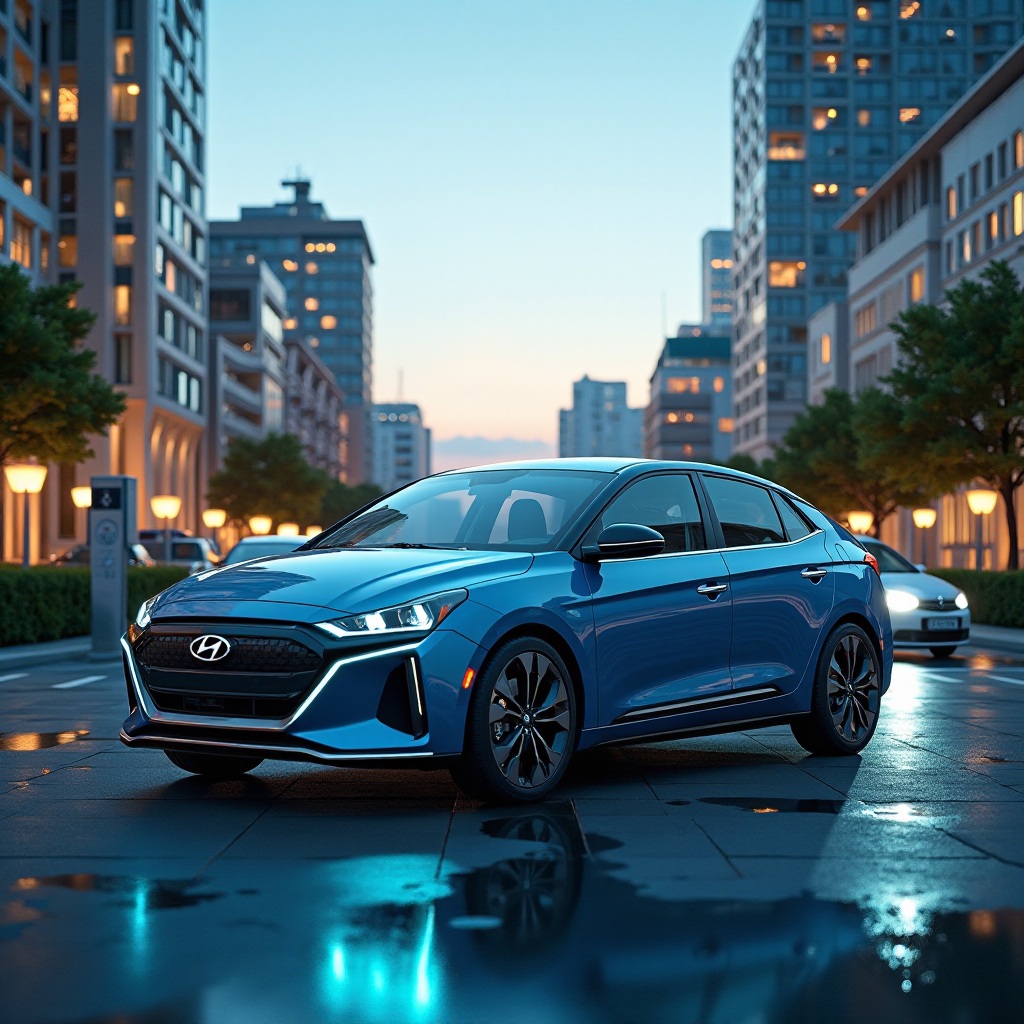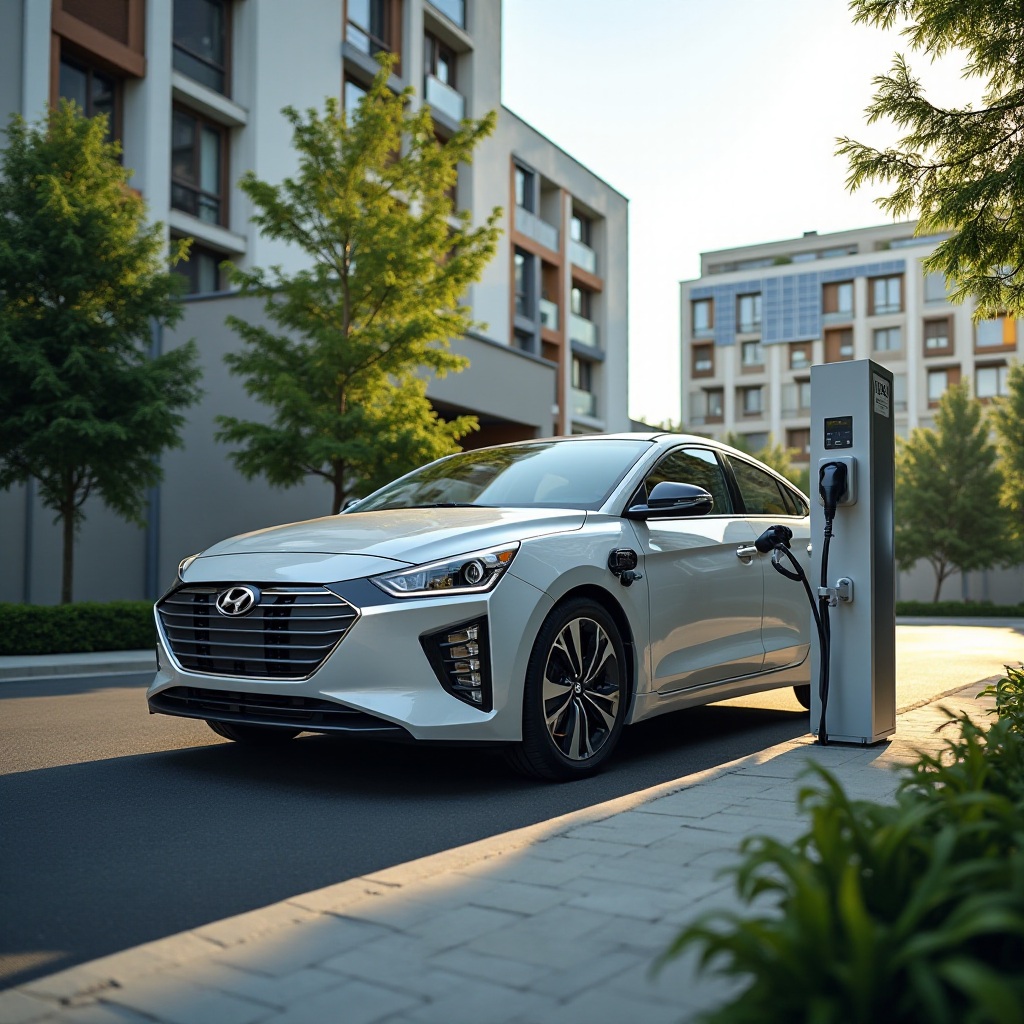Introduction
Ioniq 5 has become a buzzword among electric vehicle enthusiasts. One key feature driving this excitement is the car’s bidirectional charging capability. This technological advancement offers more than just a vehicle that can be charged at home or public stations. Instead, it turns your vehicle into a versatile power source. Let’s delve into bidirectional charging, its benefits, real-world applications, and the broader implications for both the environment and the economy.

Understanding Bidirectional Charging
Bidirectional charging comprises two main types: vehicle-to-grid (V2G) and vehicle-to-load (V2L).
-
Vehicle-to-Grid (V2G): This system enables the vehicle to either pull power from the grid or supply power back to it. This functionality is handy during peak hours when electricity demand is high because it helps stabilize the grid.
-
Vehicle-to-Load (V2L): Here, the power stored in the vehicle’s battery can power external devices or even another electric vehicle. This makes your car not only a mode of transportation but also a portable energy hub.
In essence, bidirectional charging allows users to maximize the utility of their vehicle’s battery, making it a more integral part of their lifestyle and energy ecosystem.

The Ioniq 5 and Its Bidirectional Charging Capabilities
Connecting smoothly from the understanding of bidirectional charging, the Hyundai Ioniq 5 stands out in the electric vehicle market not just for its sleek design or impressive range but also for its advanced bidirectional charging technology. This EV is equipped with an 800V electrical architecture, which enhances charging efficiency and capacity.
-
Vehicle-to-Grid (V2G): With Ioniq 5, users can return surplus electricity back to the grid. Imagine powering your neighborhood during a blackout or contributing to the grid during peak hours to help reduce overall energy strain.
-
Vehicle-to-Load (V2L): The Ioniq 5 can supply up to 3.6 kW of power, enough to run essential household appliances during an outage or power tools at a remote work site. This feature is a game-changer for both convenience and emergency preparedness.
Hyundai has designed this car to be a smart energy ally, making it much more than a simple vehicle through its bidirectional charging functionalities.

Benefits of Bidirectional Charging for Consumers
Transitioning from the Ioniq 5’s capabilities, the advantages of bidirectional charging extend beyond mere convenience:
-
Energy Independence: By enabling V2L and V2G functionalities, Ioniq 5 owners can become less dependent on traditional energy sources.
-
Cost Savings: Consumers can monetize surplus energy stored in their car battery. Selling energy back to the grid during peak hours can offset household electricity costs.
-
Increased Utility: With V2L, the car can be a power source for various outdoor activities and even during emergencies, making life more adaptable and resilient.
These benefits collectively contribute to a more autonomous and efficient energy usage model for the consumer.
Real-World Applications and Case Studies
Building on the consumer benefits, several practical examples highlight the effectiveness and flexibility of the Ioniq 5’s bidirectional charging:
-
Home Energy Management: An Ioniq 5 owner in California uses the V2G feature to offset energy costs by feeding power back to the grid during peak hours, significantly reducing monthly electricity bills.
-
Disaster Response: In Australia, the Ioniq 5 has proven invaluable in areas affected by power outages during natural disasters. Residents used the V2L feature to power essential devices until the grid was restored.
-
Commercial Use: In Japan, small businesses are tapping into their Ioniq 5’s battery to sustain operations during power interruptions, ensuring minimal downtime.
These case studies underline the practical benefits and versatile applications of bidirectional charging in the Ioniq 5.
Environmental and Economic Impact
Naturally, moving from real-world applications to broader implications, bidirectional charging is more than just a technological innovation; it has profound environmental and economic repercussions.
-
Environmental Impact: Reduced reliance on non-renewable energy sources translates to lower carbon footprints. By optimizing energy usage patterns, bidirectional charging helps in making the overall power grid more sustainable.
-
Economic Impact: Lower energy bills and the possibility of earning through grid contributions foster economic resilience. Plus, reduced demand on energy utilities during peak hours can lead to more stable energy pricing.
Thus, the integration of this technology has the potential to generate long-term benefits for both the planet and the economy.
Future Prospects of Ioniq 5’s Bidirectional Charging
Shifting from current impacts to future prospects, the journey of the Ioniq 5 and its bidirectional charging capability is just beginning. As electric vehicles become more mainstream, the impact of such technologies will likely expand.
-
Grid Modernization: Enhanced V2G technologies could revolutionize how electrical grids operate, making them more responsive and adaptable.
-
New Business Models: Car manufacturers and energy companies may introduce new business models where vehicles serve dual purposes, both for mobility and energy storage.
The future of bidirectional charging looks promising, with broader acceptance and integration likely to drive even more benefits in the years to come.
Conclusion
In conclusion, the Ioniq 5’s bidirectional charging capabilities are paving the way for a new era in energy consumption and vehicle functionality. This technology not only provides practical benefits for consumers but also contributes positively to environmental and economic dynamics. As more real-world applications emerge, the potential of bidirectional charging in our daily lives becomes increasingly evident. Adopting vehicles like the Ioniq 5 could be a significant step toward a sustainable, efficient, and resilient energy future.
Frequently Asked Questions
What is bidirectional charging in the Ioniq 5?
Bidirectional charging in the Ioniq 5 refers to the car’s ability to both charge its battery from the grid and supply power from its battery back to the grid or power external devices. This is facilitated through technologies like Vehicle-to-Grid (V2G) and Vehicle-to-Load (V2L).
How does the Ioniq 5’s bidirectional charging benefit consumers?
Consumers benefit from bidirectional charging through increased energy autonomy, cost savings on electricity bills, and the versatility of using their vehicle’s battery to power other devices or even sell power back to the grid during high demand periods.
What is the future of bidirectional charging technology?
The future of bidirectional charging technology looks promising, with potential advancements leading to more efficient and resilient electric grids, new business models for energy and automotive industries, and an overall increase in the adoption of renewable energy sources.
